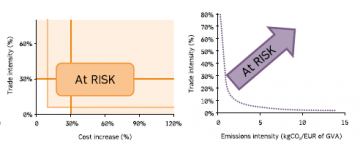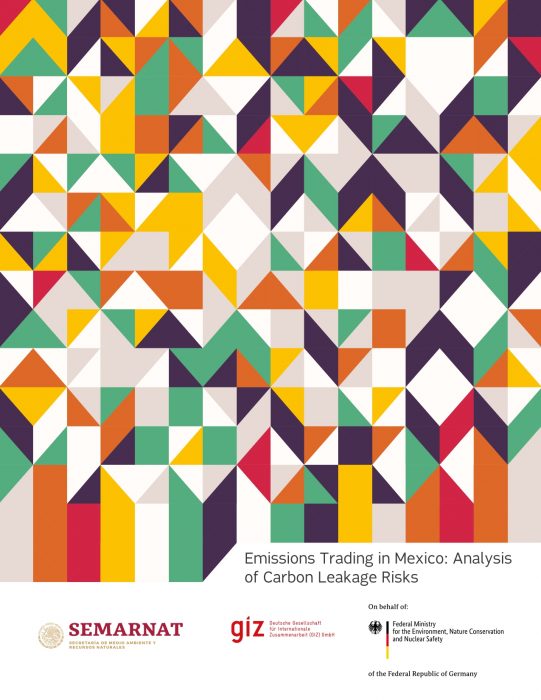The project Preparation of an Emissions Trading System in Mexico (SiCEM) publishes a novel and Mexico-specific study on the impacts of an Emissions Trading System (ETS) on competitiveness and carbon leakage, as part of an effort to provide solid technical recommendations to support a robust and cost-effective ETS in Mexico.
In light of the upcoming pilot phase of the Mexican ETS, set to begin in 2019, the SiCEM project of the Deutsche Gesellschaft für Internationale Zusammenarbeit (GIZ) GmbH has been exploring the economic implications of establishing an ETS in Mexico.
After the entry into force of the Paris Agreement in 2016, the Mexican Congress approved a reform to the Mexican General Law on Climate Change in 2018. The reform established a mandatory Emissions Trading System to support climate change mitigation at the lowest cost possible, stipulating that the ETS regulation should not adversely affect Mexico’s international competitiveness.
The legislation acknowledges that an asymmetry in international carbon pricing policies—that is, when some countries have higher prices on emissions than others—can potentially lead to a loss of industrial competitiveness for the countries with the highest carbon prices, since these prices usually increase production costs in the short term. This can cause the phenomenon of carbon leakage, in which firms decide to move their production to jurisdictions with less stringent carbon pricing policies; as a result, the emission reductions achieved domestically may be offset by the higher emissions elsewhere. Overall, global emissions either stay the same or increase.

The published study addresses these concerns for the particular economy of Mexico—including its sectoral composition and the level of linkage with the global economy—concentrating on its emissions-intensive trade-exposed (EITE) industrial sectors. Up to 2021, the study finds that the Mexican ETS would have only a marginal impact on the country’s economy-wide growth. Importantly, the decision on whether the emissions cap follows the unconditional or conditional targets of the Mexican Nationally Determined Contribution (NDC) has a negligible impact.
A focus on the competitiveness impacts to specific sectors provided a different perspective. Due to their level of interconnection with the global economy, and the carbon-intensive nature of their processes, some sectors are identified as vulnerable to the risk of carbon leakage, particularly the iron and steel, glass, cement and chemical industries, and the pulp and paper industry to a lesser extent. However, this doesn’t mean that these sectors should be excluded from participation in an ETS. Support mechanisms (i.e., free allowance allocation as part of “transition assistance” when setting up an ETS) for vulnerable industries may be established, at least in the initial phase of the ETS. The recommendation is that the allowance allocation gradually evolves towards becoming a mix of output-based allocation and benchmarking, with auctioning progressively introduced as the carbon market matures.
The Mexican ETS pilot program provides for a valuable opportunity to assess the carbon leakage potential of vulnerable industries. Periodic review of the system will allow to determine more appropriate support schemes, as well as to reduce the share of free allowances to increase carbon revenue potential. The present study covers the competitiveness impacts, the results of which provide recommendations for the Mexican ETS design. Additional studies covering a variety of technical issues will be published in the “IKI-Alliance Mexico” blog in the coming months.
For more information, please contact us at: Comercio.Emisiones-MX[at]giz.de
Click on the image below to download the publication:

